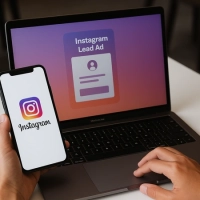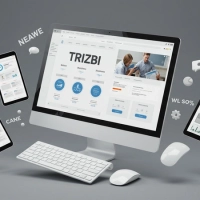
What is B2B Segmentation?
B2B segmentation is a marketing method that allows the market to be divided into parts according to certain criteria and marketing strategies that are suitable for the demands and movements of the audience are created. When applied correctly, this method is so powerful that it allows marketers to draw a picture of the customer base, group them according to their similarities and develop marketing strategies suitable for each segment they target. These strategies can be so personalized that the return rate can be very high in some cases.
Today, it is possible to talk about many segmentation methods that are accepted in the marketing world. For this reason, we would like to talk about 5 different methods that you can use in the B2B segmentation process.
Segmenting Customers Based on Firmography
Marketers who engage in B2B segmentation use firmographic data in the same way that B2C marketers use demographic data. This is a method of segmenting customers based on common characteristics. Firmographic segmentation groups customers based on factors such as business size (number of employees or annual revenue), company location, industry, and even other technologies used by targeted companies.
On the downside, firmographics have the same drawbacks as demographics for B2C marketing. Just because a customer is a 40-year-old woman doesn’t mean they want to buy dish soap, and just because a company has 1,500 employees and over $5 million in annual revenue doesn’t mean they need a cloud service provider. The conclusions you can draw from firmographic segments are limited.
Segmenting Customers Based on Tiering
Customer tiering is a segmentation method based on how well a customer matches your business's goals. For example, you can use customer tiering to segment customers based on how much revenue you expect them to bring to your business over the life of your relationship, or how closely this customer matches your own sales and marketing strategies.
Segmenting Customers Based on Needs

Needs-based customer segmentation groups your customers based on what they are looking for in a product. This model segments customers based on their needs. Of all the segmentation methods, this one offers the marketer the most accurate way to target customer segments. It is a highly scalable method as the marketer can specify as many segments based on needs as they prefer.
Needs-based segmentation often stems from what initially drove your business. If you’re a cloud service provider and a site visitor comes to you via a blog post about file sharing, you may determine that the prospect needs a solution that simplifies file sharing. As a result, you can target that prospect with additional content surrounding this concept to help move the user further down your sales funnel.
Segmenting Customers Based on Customer Sophistication
As the name suggests, segmenting based on customer sophistication means dividing your target audience based on product or industry intelligence. Like the other methods included in this post, segmenting based on customer sophistication offers the opportunity to tailor your campaigns to a prospect’s specific needs. However, instead of segmenting customers based on their needs, firmographic information, or potential value to your business, customer sophistication looks solely at the target company’s awareness of the problem your product solves.
Segmenting Customers by Behavior
For demand-gen marketers, behavioral segmentation serves as a powerful complement to layered segmentation to maximize the value of your existing customer base.
Behavioral segmentation looks at the ways your existing customers interact with your product or solution to identify two critical things:
-
Could this customer benefit from expanding their existing solution?
-
Is this customer at risk of breaking our solution?
We have tried to compile 5 of the prominent and accepted segmentation methods that you will need to take your B2B business model one step further. When we consider that B2B Segmentation success is directly proportional to the variety and depth of the data you have, it is clear that the biggest helper for you is Trizbi b2b e-commerce erp software. Thanks to its modules that can effortlessly offer a wide range of data, it meets your needs in segmentation studies to a large extent or completely.























